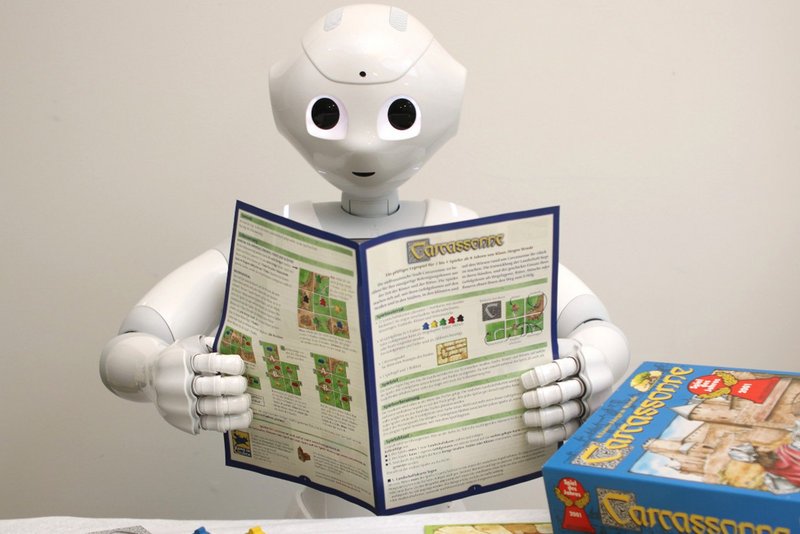
Ambassadors of sustainability
Nuremberg's Toy Museum aligns itself with the UN’s 17 Sustainable Development Goals
By Peter Budig
The Nuremberg Toy Museum is transforming itself. After completely remodelling the foyer, it presented its new reception and exhibition area to the public on 26 October 2021.

The foyer was designed and realised by the renowned museum architects Sunder-Plassmann & Werner from Hamburg. The team gathered around museum director Dr Karin Falkenberg has achieved a great success. The new museum is not just an architectural, design-driven new beginning that meets the requirements of air-conditioning technology and fire protection - the museum director wants to achieve something truly special with her new concept. In the old Haller building dating back to the 16th century, in which the founder and donor Lydia Bayer has created a museum of world renown since 1971, Dr Falkenberg wants to develop the “Emotional World Museum” of the future. Emotion writ large! It was certainly not by chance that the “News from City Hall: Toy Museum Presents Public Benefit Balance Sheet” came out shortly before. It’s all about the big picture here.
Sustainability, inclusion, human community
The museum director has been trying to push her project forward since 2014. Of course, she took over a museum of world renown, and the visitor numbers are terrific. “The Toy Museum displays old toy treasures and new world toys on an area of 1,400 m2: Lego, Barbie, Playmobil, Matchbox” – that’s what it still says on the home page. Karin Falkenberg is no longer satisfied with merely “displaying”; she believes that the “old collection house has had its day”. An “emotional world museum strengthens the future viability of the city and society. It promotes an understanding of the world and the playful courage to act responsibly. Toys are made to understand the ‘world in miniature’. In this way, all 17 of the United Nations’ Sustainable Development Goals can be epitomized.” This is what the 2030 Agenda says.

These are big words that are immediately followed by exhibition formats in the new foyer that “must be intuitively comprehensible for everyone”: a wild herd of horses hangs above a flat table that visitors can also move under (for people in wheelchairs), low enough for children, coherent for an academic view of the historical topic of toys. A small, light-coloured toy horse on wheels under glass kicks things off, so to speak: a 2000-year-old collection item of the museum serves as a Trojan ambassador, which very stealthily leads one to the topic in question. The other rampaging flight animals gallop into the distance: they stand for toy tradition and just look totally cool. Below them, on the table, there’s an army of dolls, part of the great human community. Next to the classic Barbie with her 90-60-90 blonde perfection, there’s a wheelchair user doll, children, people whose appearance can be read as Asian, Black dolls, punks, quotes from film history... Emotion and diversity in the tangible exhibition event. This is indeed something fundamentally different from a mere display in a glass cabinet.
Falkenberg’s bold announcement: one storey every year
The new foyer cost EUR1.1 million and was funded through bequests from Lydia Bayer, Margot Hundrisser and Ute Schmaja, donations and endowments such as those from the Gerd von Coll Foundation, and not a single euro from the budget. “We always have to show that we can do it; only then will there be money,” explained Nuremberg’s Mayor of Culture Professor Julia Lehner. This foyer will also put pressure on the political decision-makers – it has what it takes to do just that. “One more floor every year” is what media historian Falkenberg has set as a renovation goal for her four-storey building.

Sustainability is the key word. Based on the UN’s 17 Sustainability Development Goals (SDGs), the exhibition will play with the possibilities this topic offers. The special exhibition “Toys and Racism” already demonstrates this. In 2018, a coloured tin man performing a slave dance had moved Adwoa Mtongo, a Black museum visitor from the USA, to accuse the museum of racism. This incident prompted museum staff member Mascha Eckert to create an exhibition that includes seven toys with unmistakable racist references, thus putting into practice the request of the Head of Museums, Dr Eser: “Make an exhibition out of this topic – go public!”
About the Author:
Peter Budig studied Protestant theology, history and political science. He worked as a freelance journalist, headed up the editorial department of a large advertising paper in Nuremberg for ten years and was the editor of Nuremberg’s Abendzeitung newspaper. He has been freelancing again since 2014 as a journalist, book author and copywriter. Storytelling is absolutely his favourite form.



